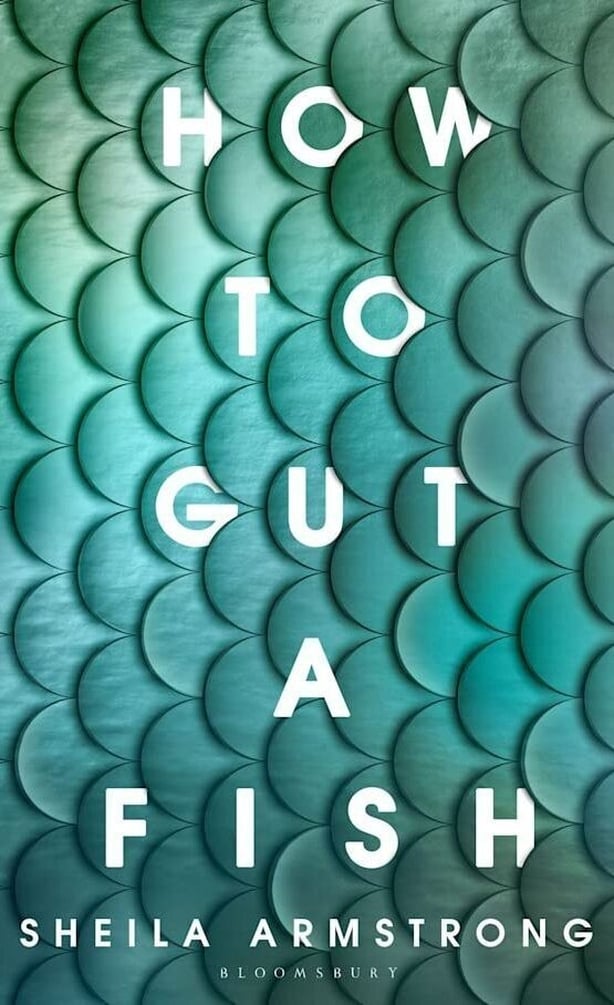The poet Elizabeth Bishop once caught a fish. This fish, with skin like "wallpaper", "fine rosettes of lime" on its side, a "weapon like" mouth, would become the inspiration for one of her most celebrated poems – titled 'The Fish'. It’s a lesson, like so many Bishop poems, on looking. But in the end, she "let the fish go".
In her debut collection of short stories, Sheila Armstrong takes up that metaphorical fish, and cuts it open.
Originally from Sligo and now living in Dublin, Armstrong’s collection of potent short stories is a testament to the mechanics of good writing. It is written in the kind of graceful, deliberate prose that makes you take your time. For this reason, the stories are all the more unsettling, engaging and often horrific.
We need your consent to load this rte-player contentWe use rte-player to manage extra content that can set cookies on your device and collect data about your activity. Please review their details and accept them to load the content.Manage Preferences
Listen: How to Gut a Fish author Sheila Armstrong talks to RTÉ Arena
It begins with Hole, about a sinkhole that appears in a fairy fort and swallows villagers – a bewitching story of inexplicable events that many Irish readers will feel at home in. It’s told with a haunting mysticism and an empathy for Irish superstition, but captures elements of modern life: a Korean man living away from his family and relying on video calls, a "bus of yawning camogie players".
It’s an effective entry point into the world Armstrong builds in her book, one that straddles the familiar and the alien.
Red Market, an arresting and horrific story, masterfully builds on this sense of oddness. Set in a country market, Armstrong pivots sharply from scenes of stalls being unsheathed and coffee pots warming, to the image of a young girl bound at the legs and elbows, displayed alongside cooking pots and a box for people to place bids on her organs.
The brutality of the scenario is heightened by Armstrong’s details, such as the advertisements for the market on social media that call the girl "the product".
There are few heroic moments in Armstrong’s stories, but rather grim and only vaguely distorted reflections of reality. In Dado, a story of a hit-and-run in a small rural area, a WhatsApp group started to campaign for streetlights turns into a chain mail-filled echo chamber.
Armstrong embraces the grotesque in her stories, building images that unnerve. In The Skellington Dance, a father pretends to unzip his son’s skin from his body before bed, while clouds are said to "sh*t out wind". In Red Market, the girl isn’t gagged but muted with anaesthetic spray and defecates on herself while sedated overnight.
In this dizzying imaginary terrain, Armstrong is a confident guide, and knows how to make the reader pay attention to what’s being said by shifting our focus. While the horrific subject matter of a story like Red Market is the obvious unsettling element, in Mantis Armstrong switches up her prose style to defamiliarise the subject of domestic violence, urging us to consider the "whip-crack thud" of the narrator all the more intently because of the disjointed prose.
Her collection is an artful examination of our deepest layers and the impulses that inhabit them.
Mantis is a frenetic stream-of-consciousness story told in the first person, about a man searching in vain for cough medicine for the son he’s estranged from. The frantic prose captures the humour of thought, the childlike patter of rudimentary ideas and reactions. This, however, only makes the subject matter itself even more unsettling and sad.
The care Armstrong takes with her words is amplified by the microscopic focus throughout the stories – zeroing in on a small detail and building the scene out from it, like a steering wheel of a car that goes barrelling through a country setting. It’s particularly impressive given the economy needed for good short story writing.
This is seen most clearly in Lemons, which follows two sisters through womanhood, as they experience abortions, pregnancy and illness. Decades are condensed into paragraphs with an elegance that feels lithe rather than rushed. Here, we glimpse Armstrong’s capacity for tenderness, as the bonds of sisterhood is deftly examined.
What shines through most is a confidence with and respect for the craft of storytelling, evident in her rich similes – birds are "magnetic filings" – and her depth of feeling for her cast of characters.

Reading Armstrong’s tender and haunting collection, Elizabeth Bishop’s description of her fish’s eye kept coming back to me: "the irises backed and packed / with tarnished tinfoil / seen through the lenses / of old scratched isinglass." An eye seeing an eye seeing.
Like Bishop, Armstrong is in the business of looking, but that isn’t enough for her. Her collection is an artful examination of our deepest layers and the impulses that inhabit them.
As well as this, like Bishop, and countless other poets who have found a metaphor in the laborious catching and gutting of a fish, Armstrong has captured more than the peculiar semi-enchanted society we inhabit in Ireland. She has also written a reflection on writing itself.
How to Gut a Fish by Sheila Armstrong is published by Bloomsbury


